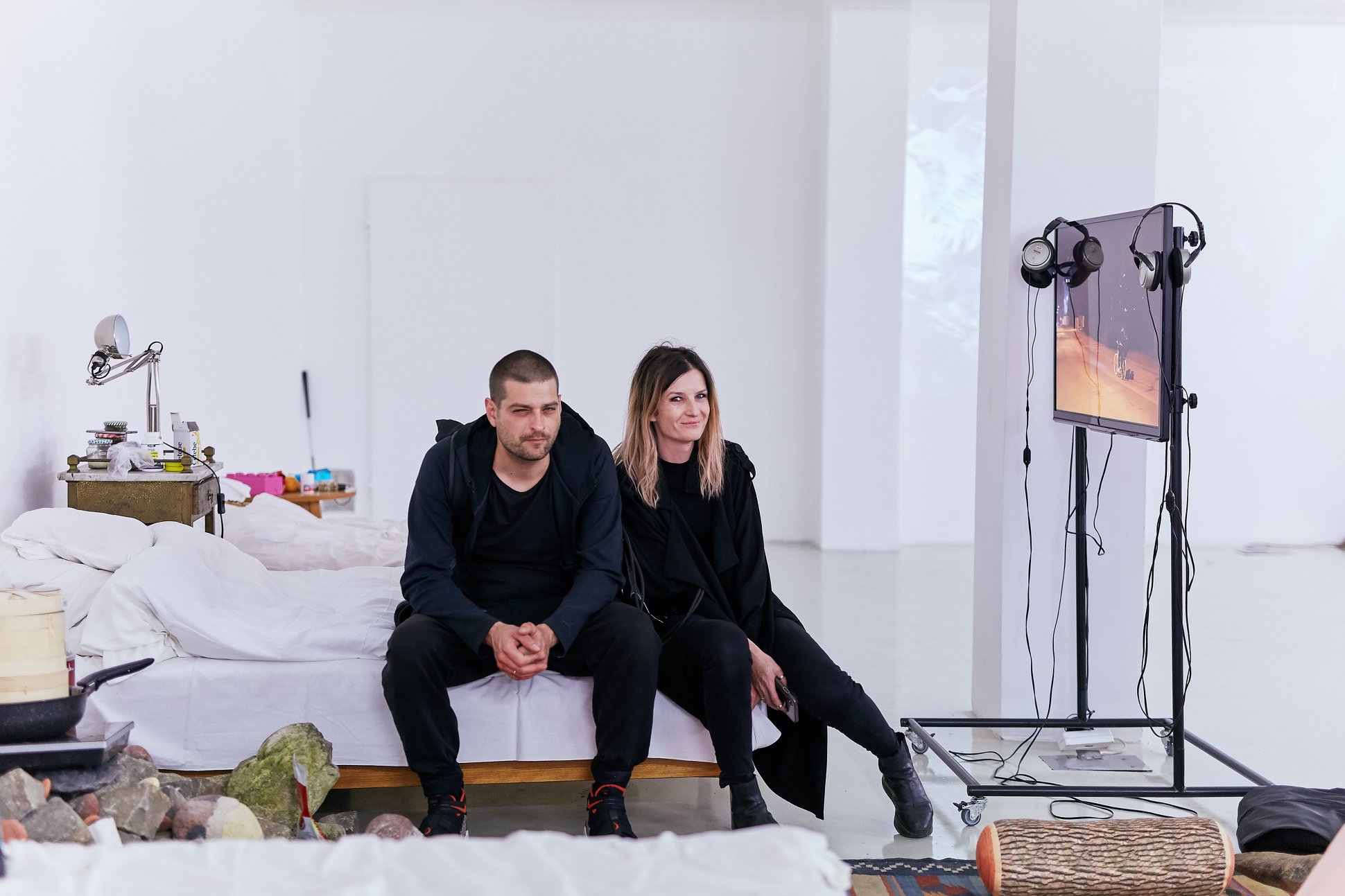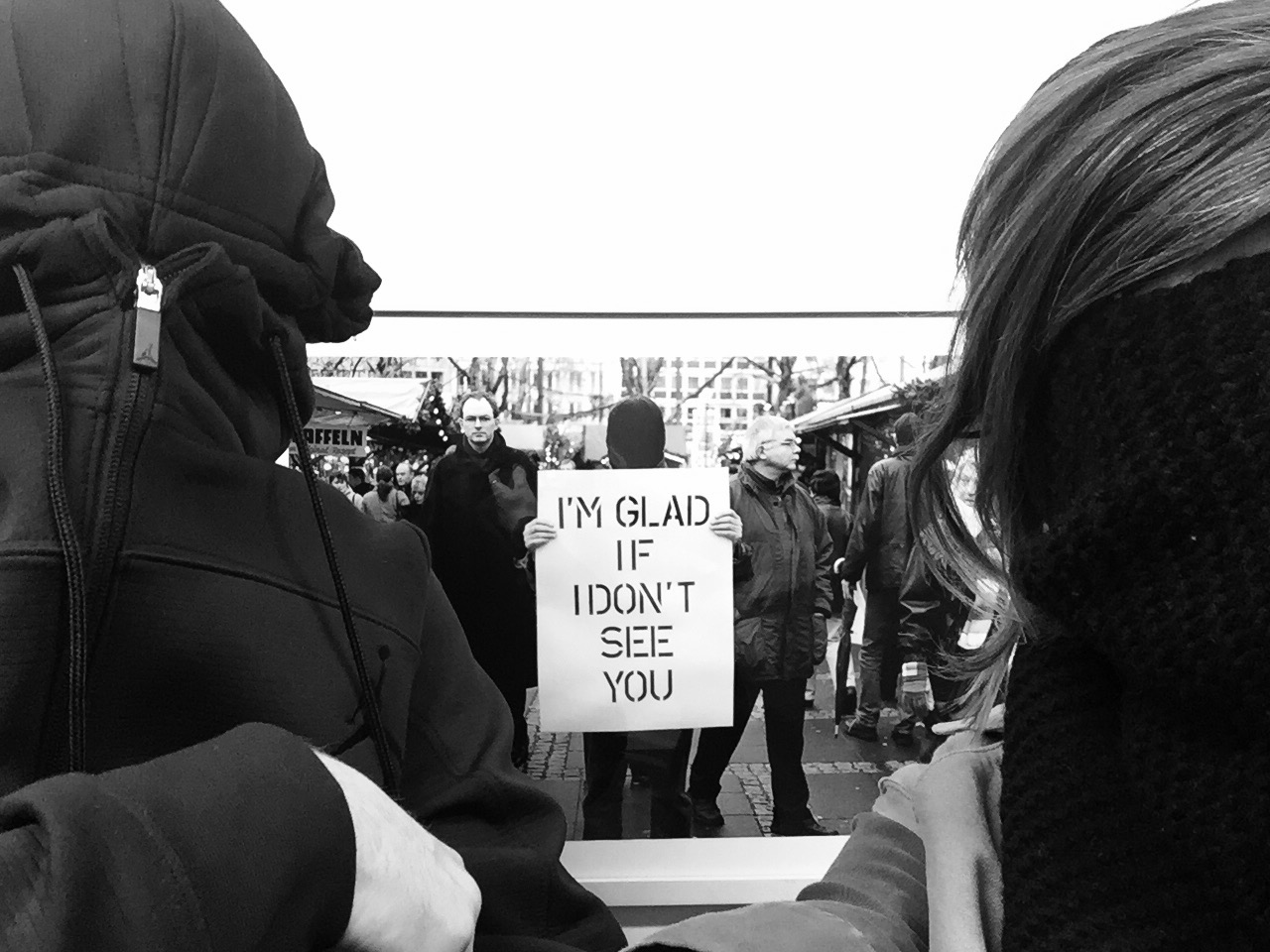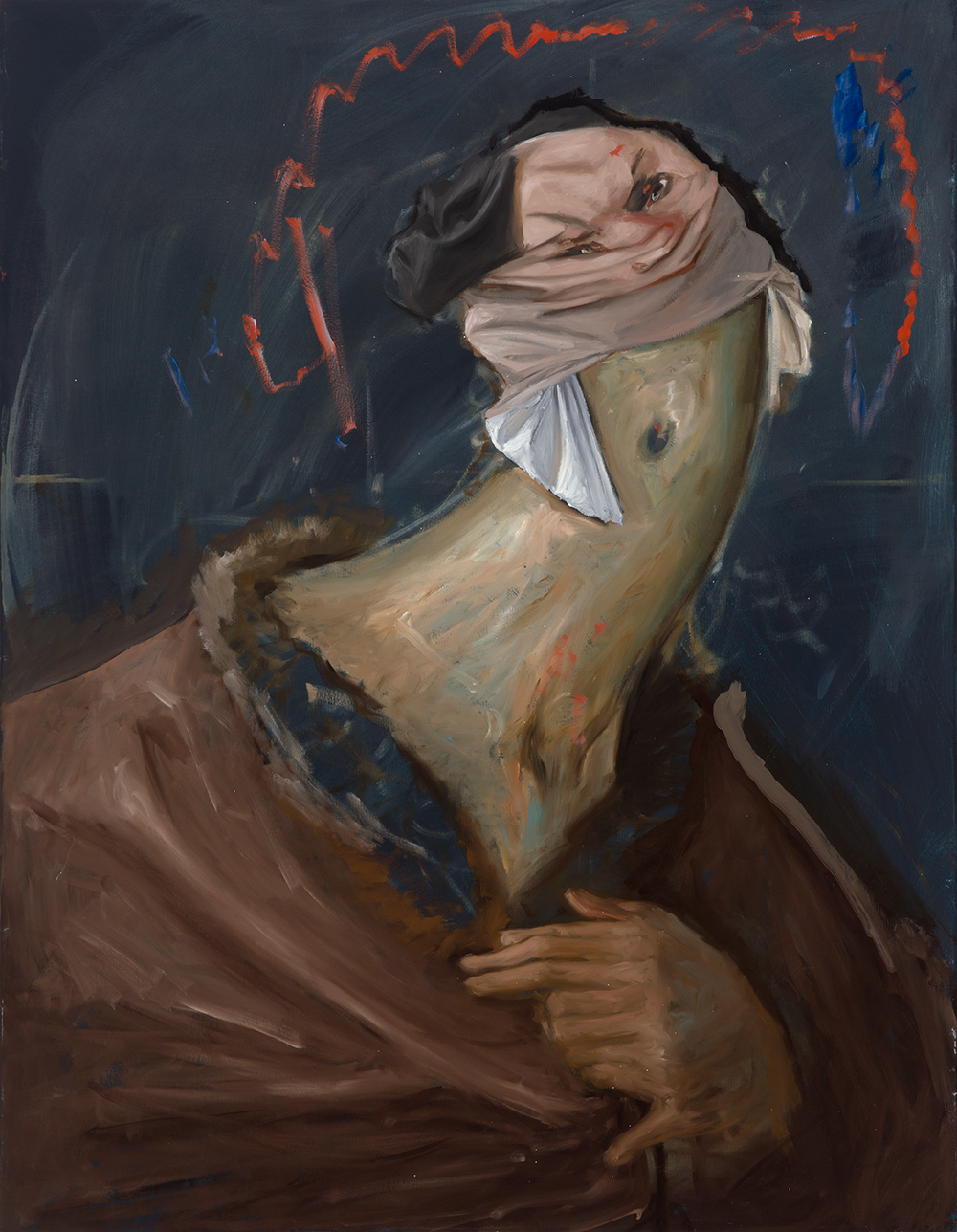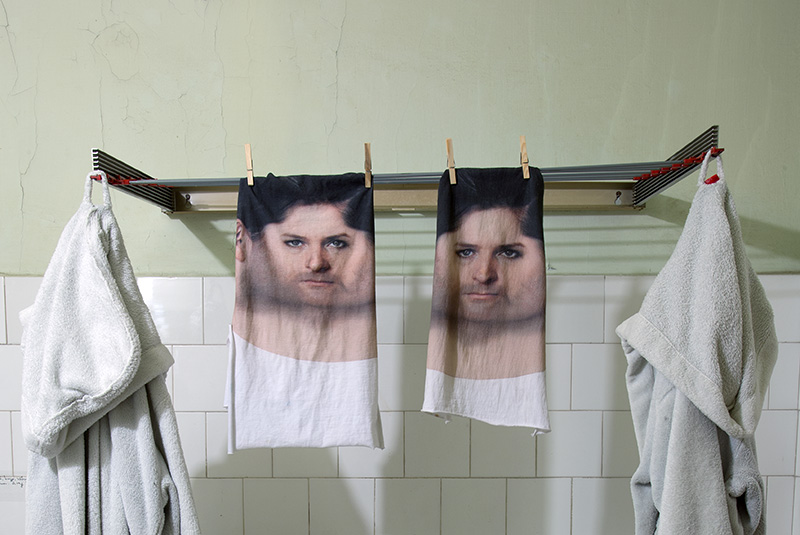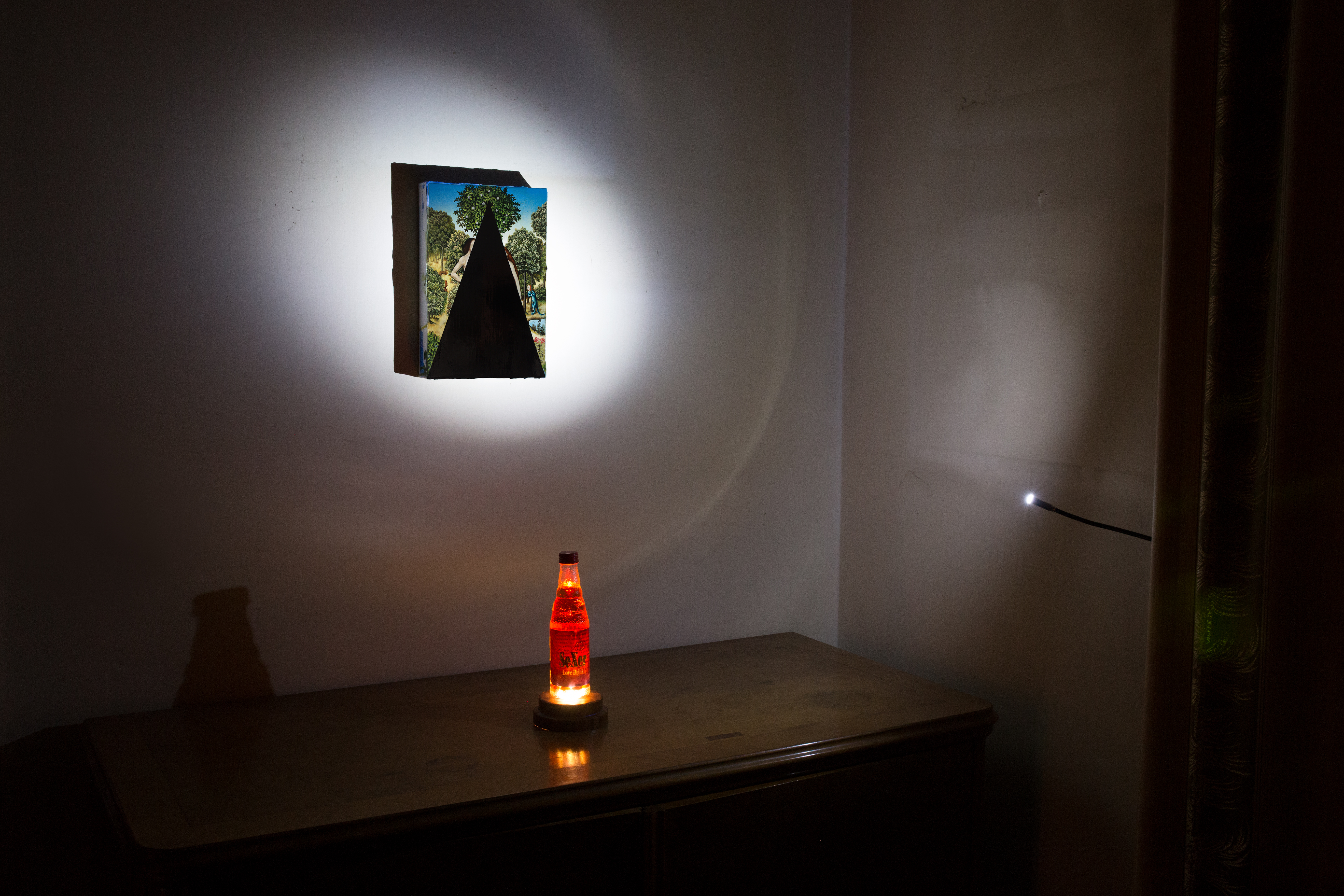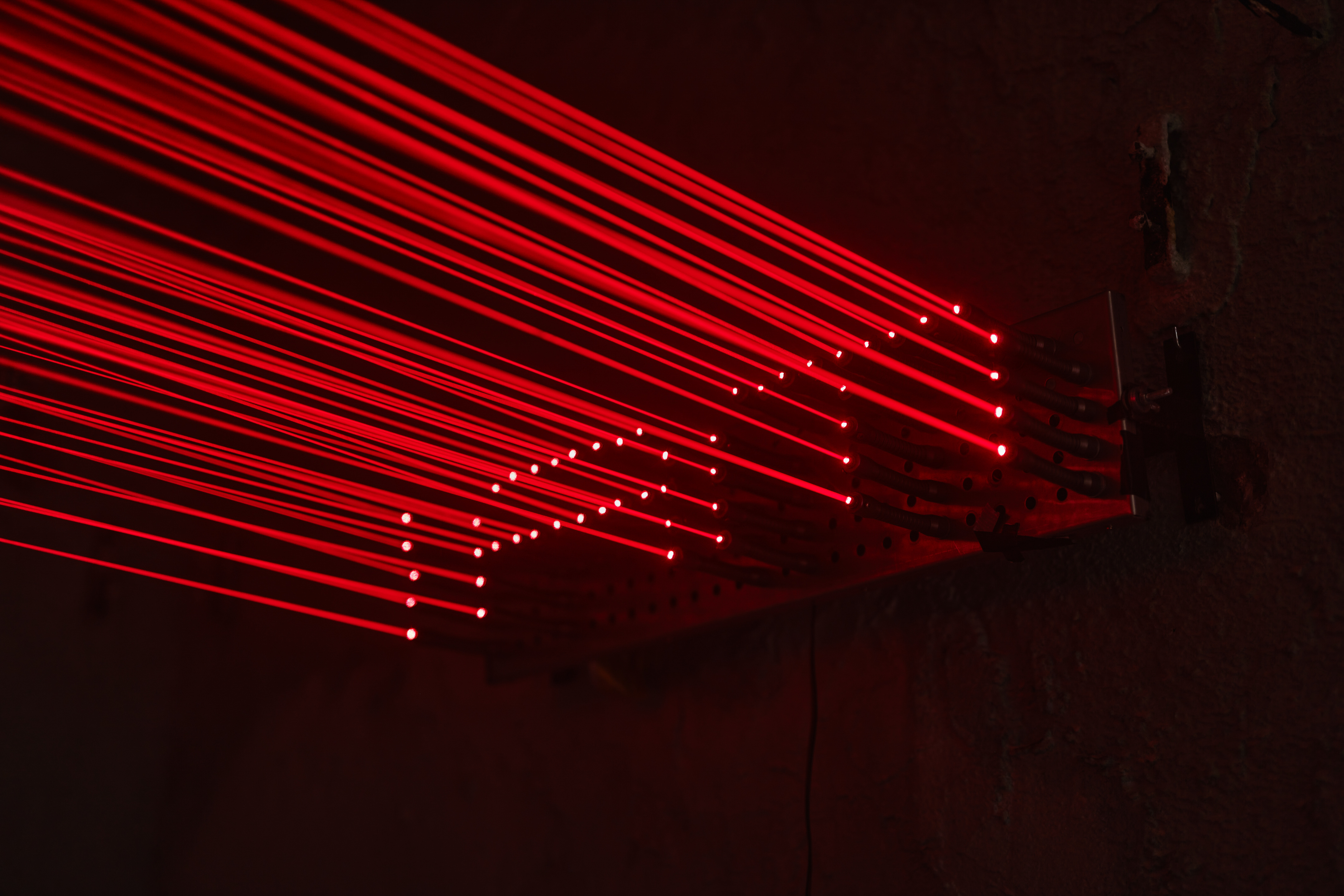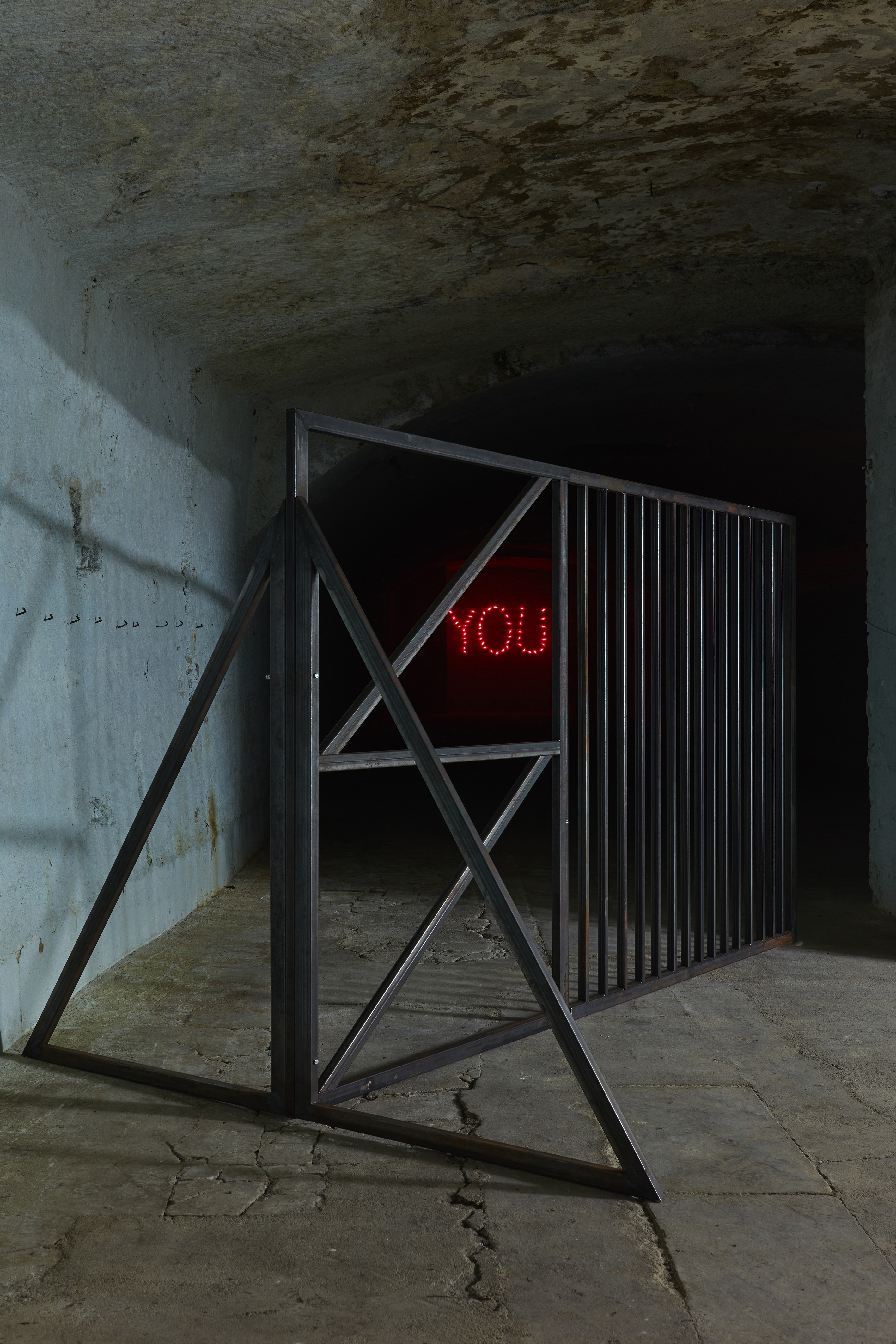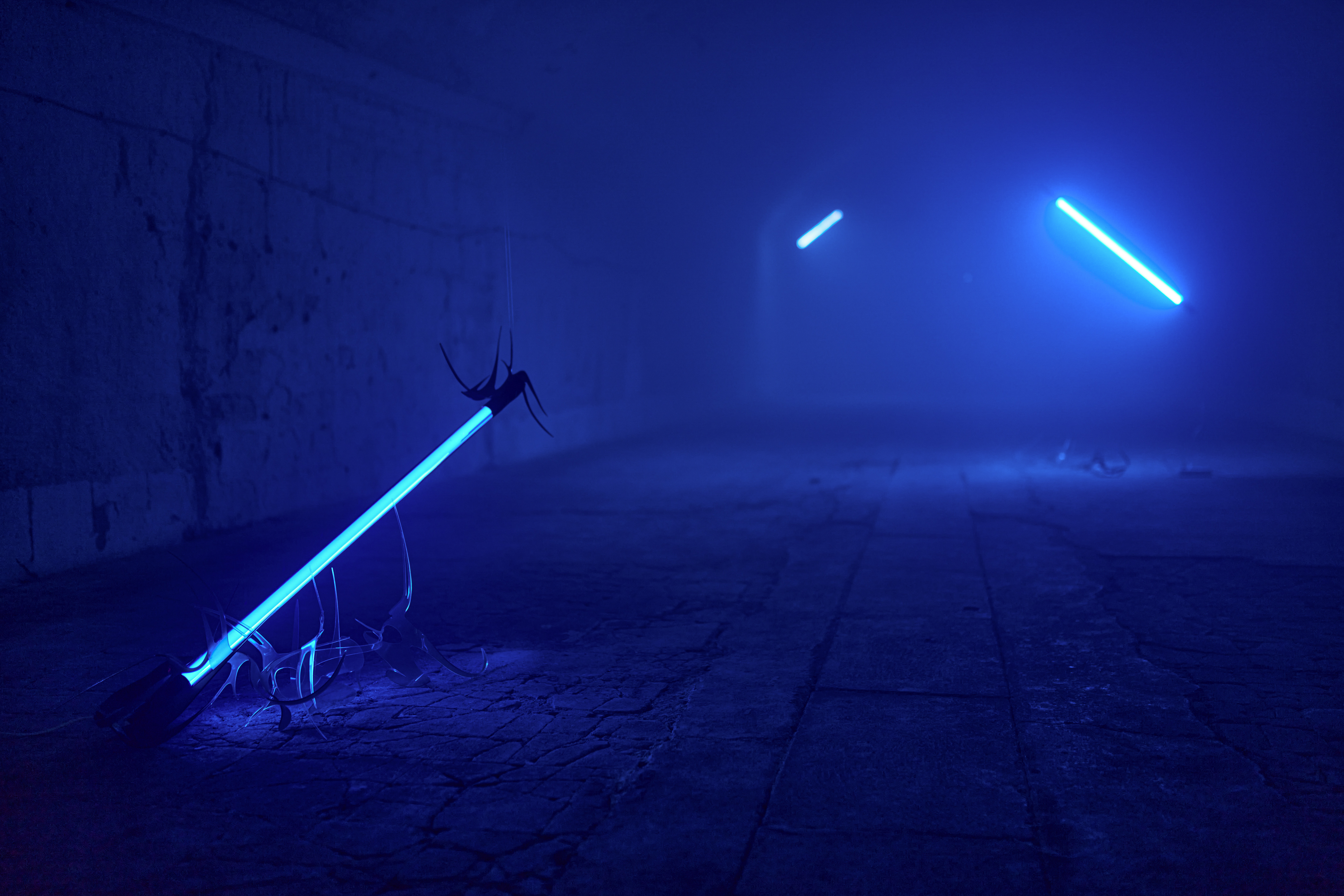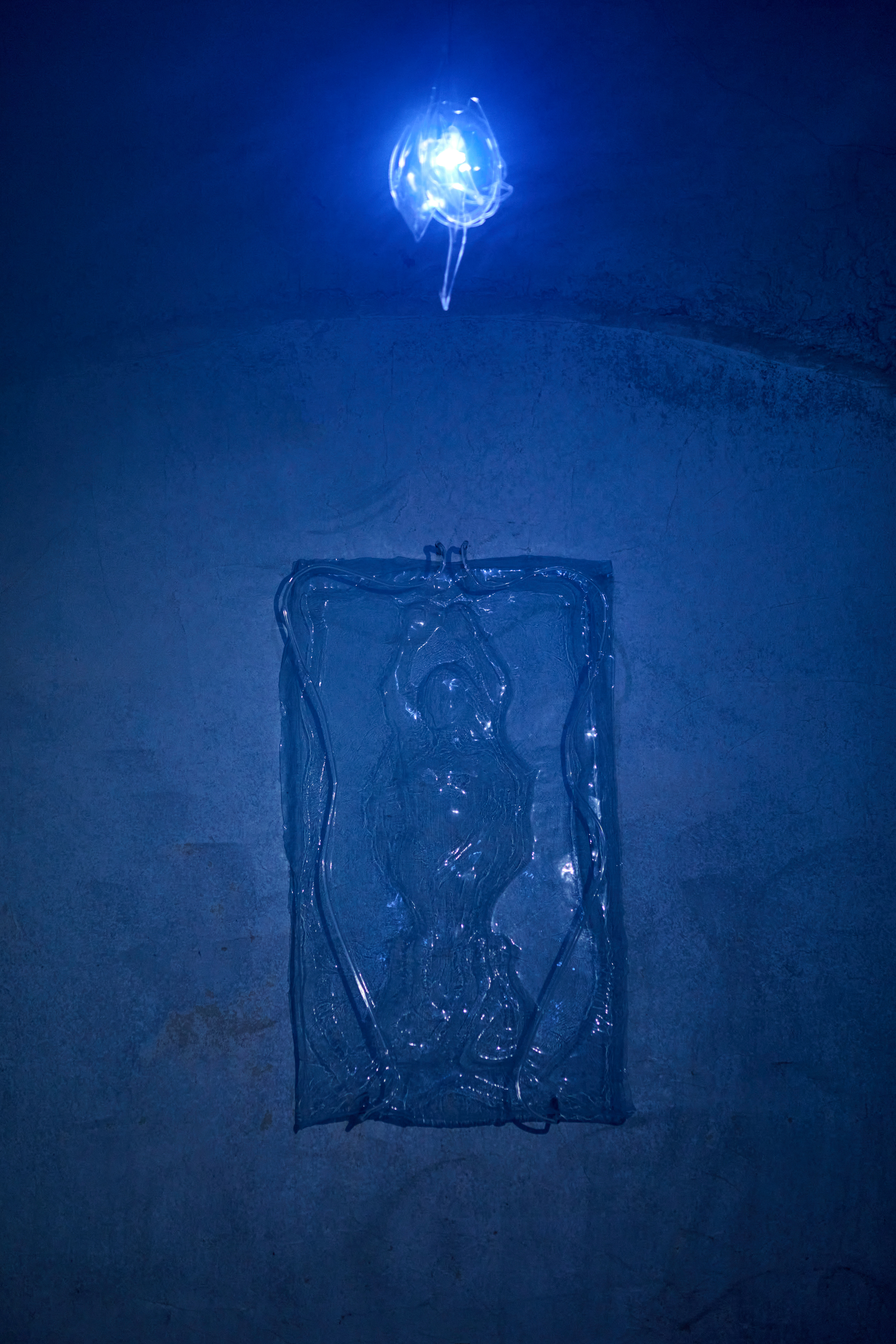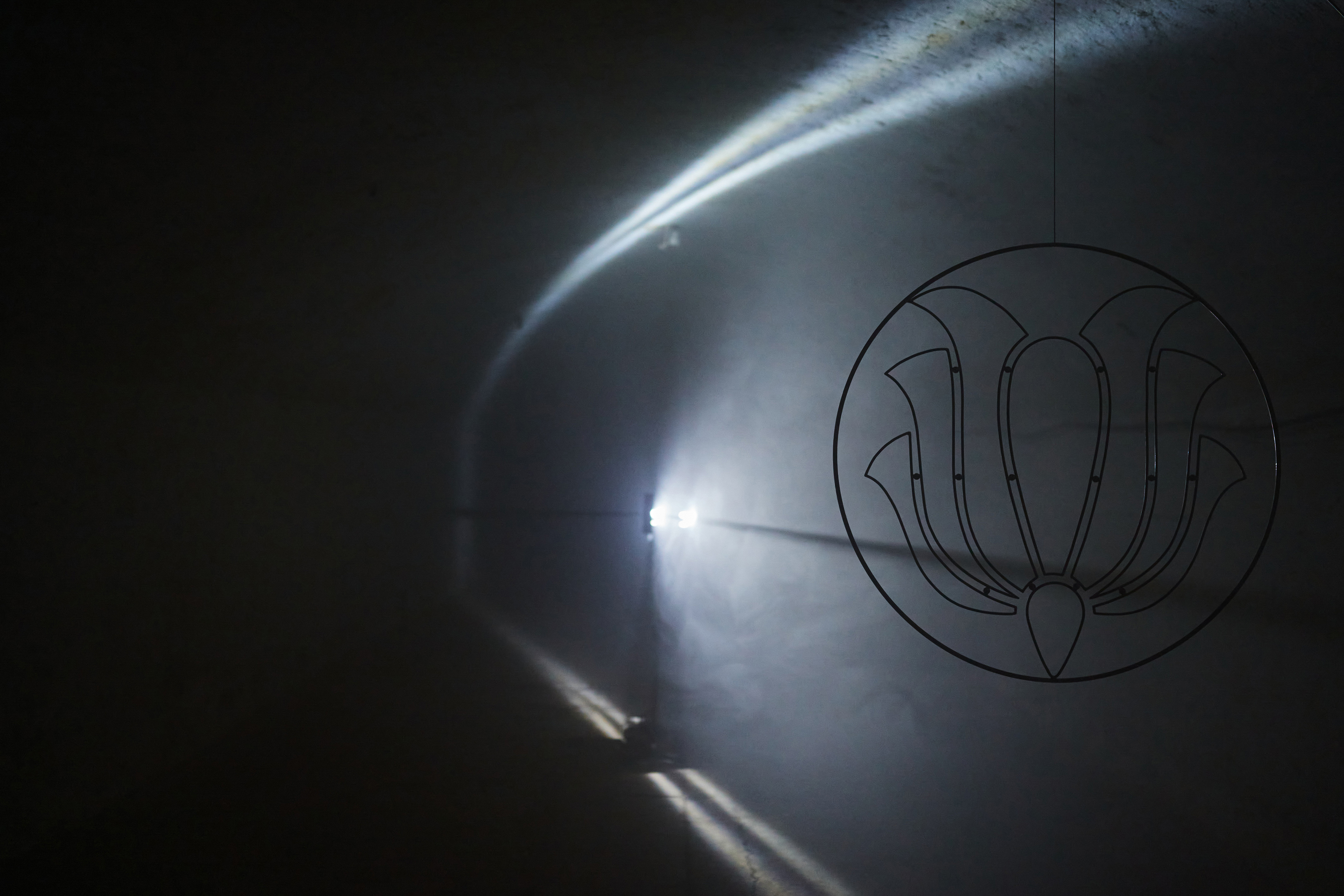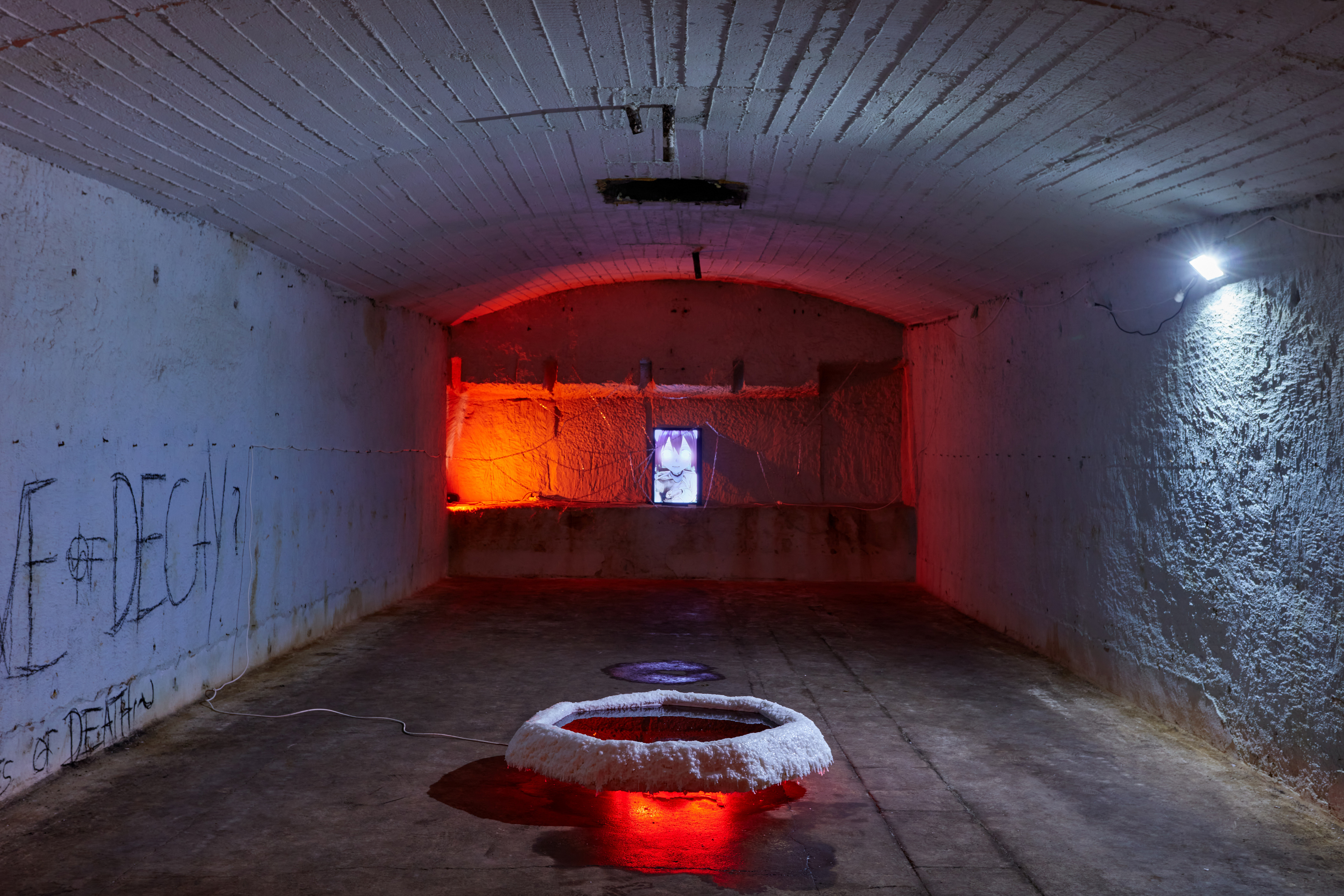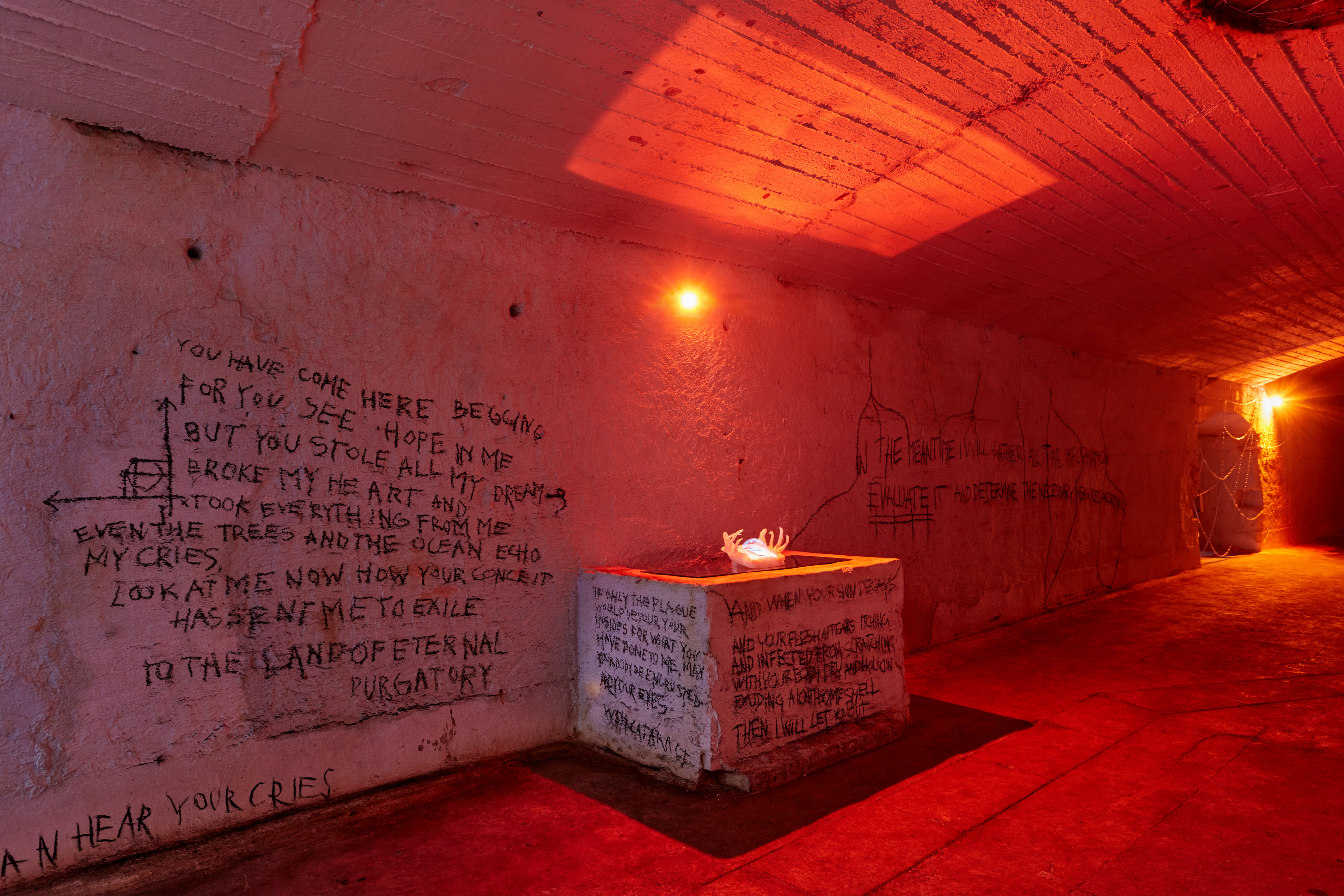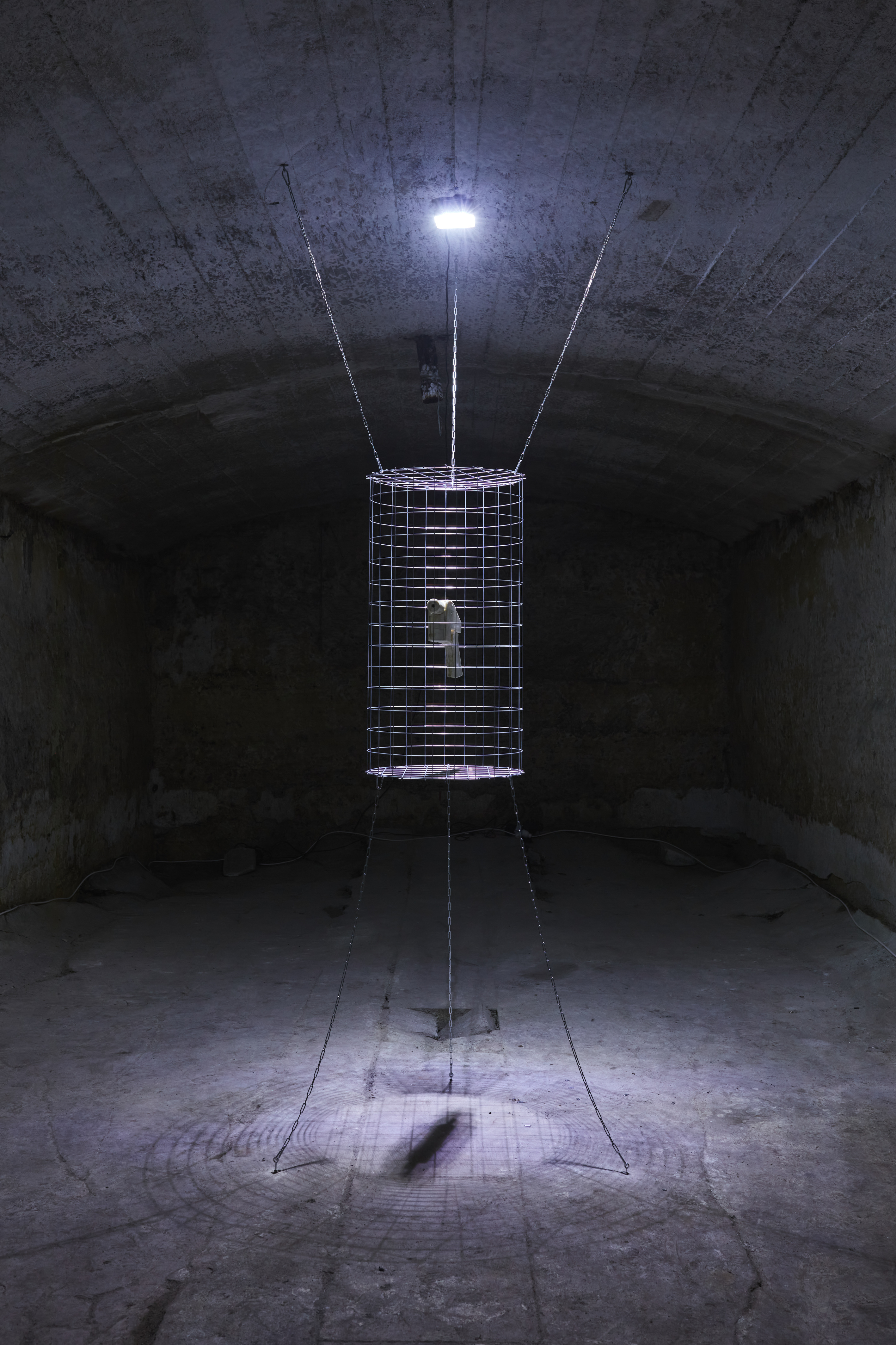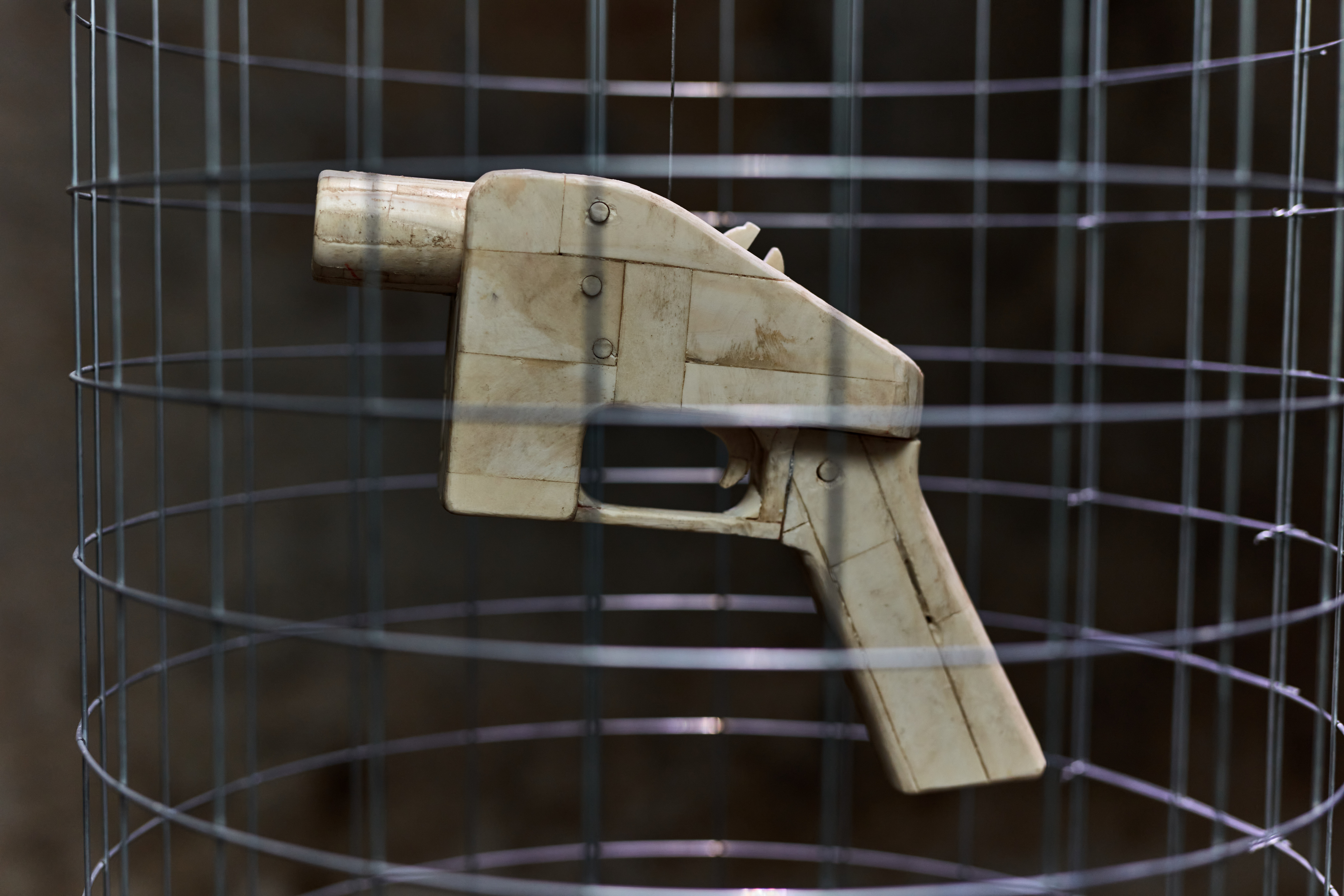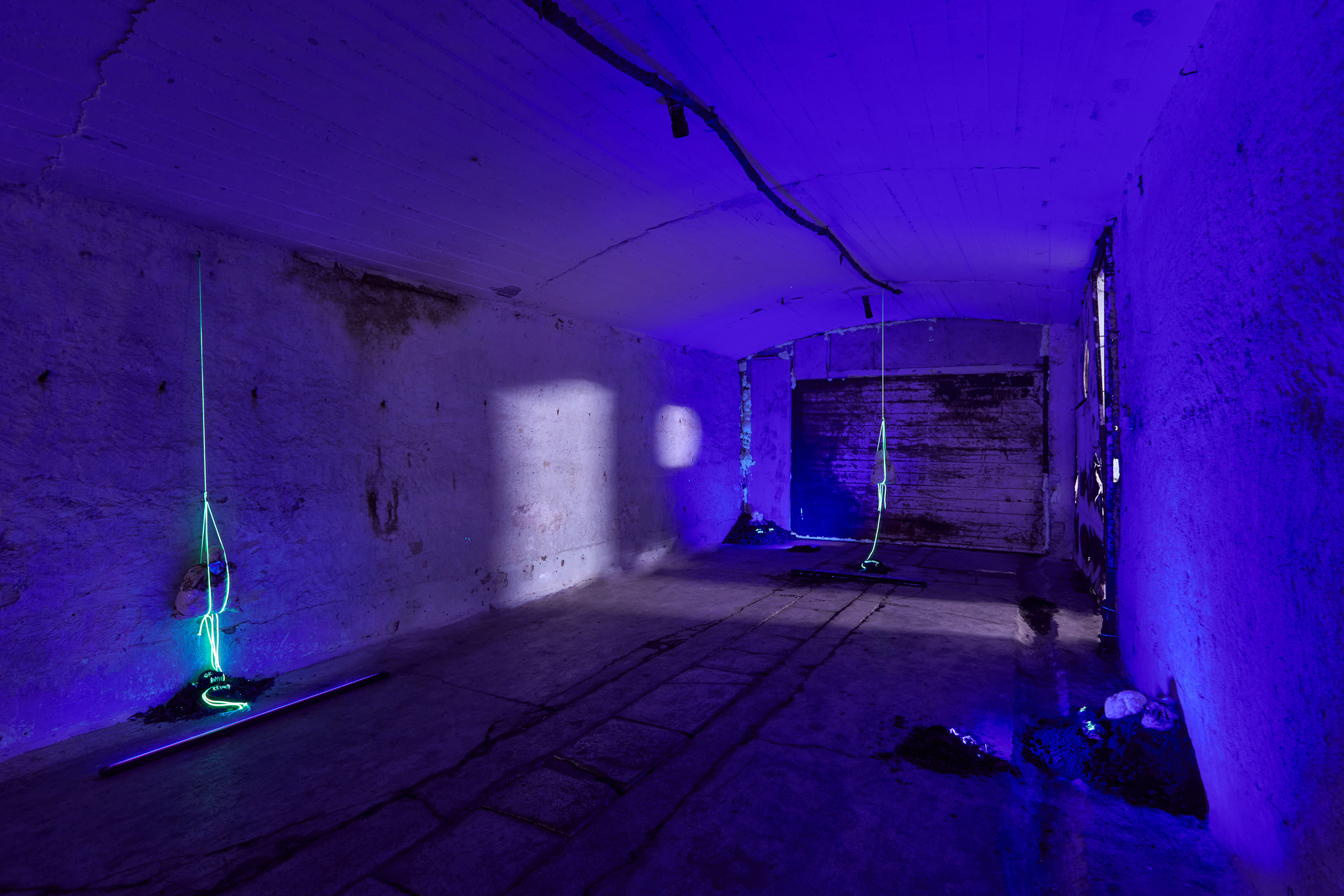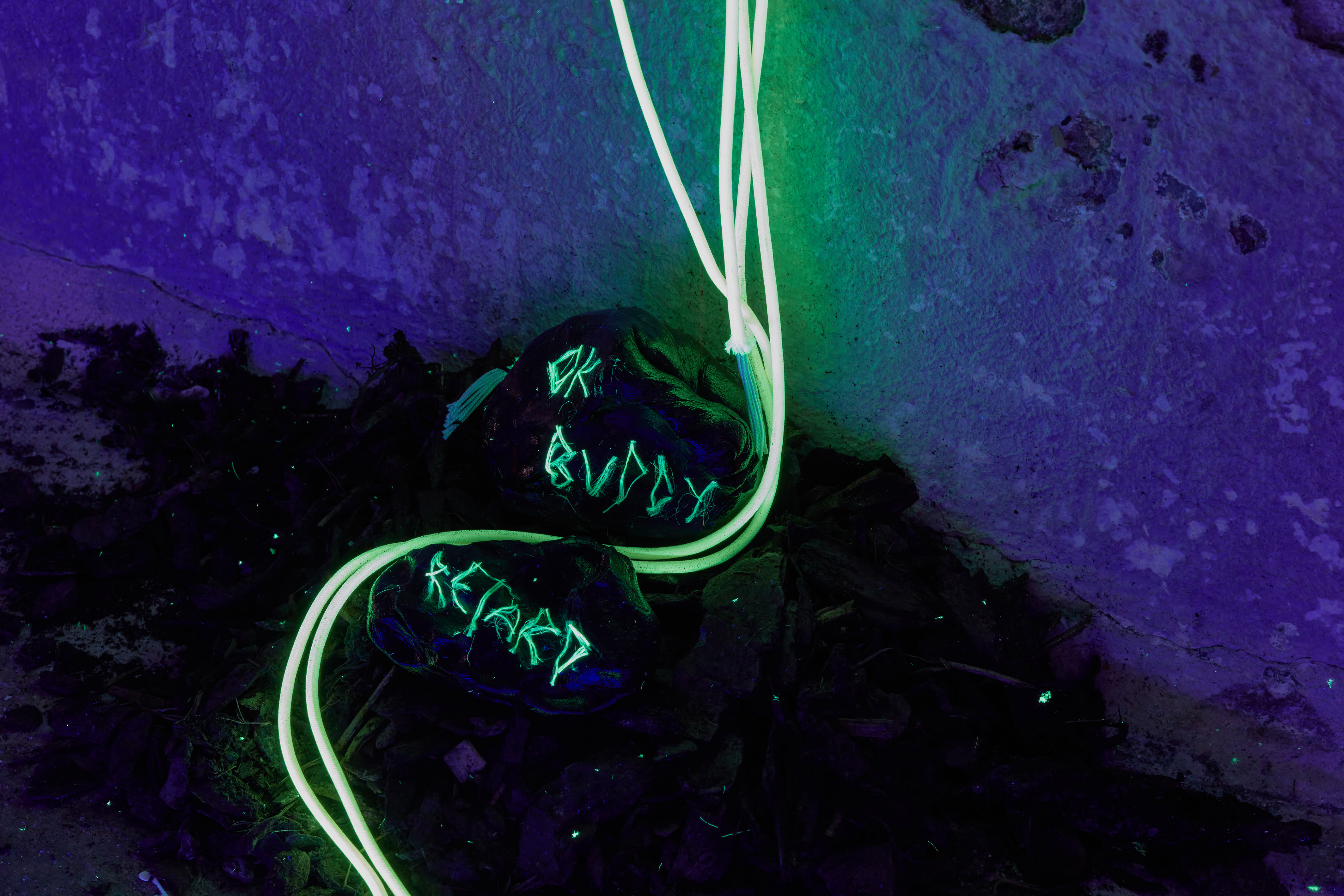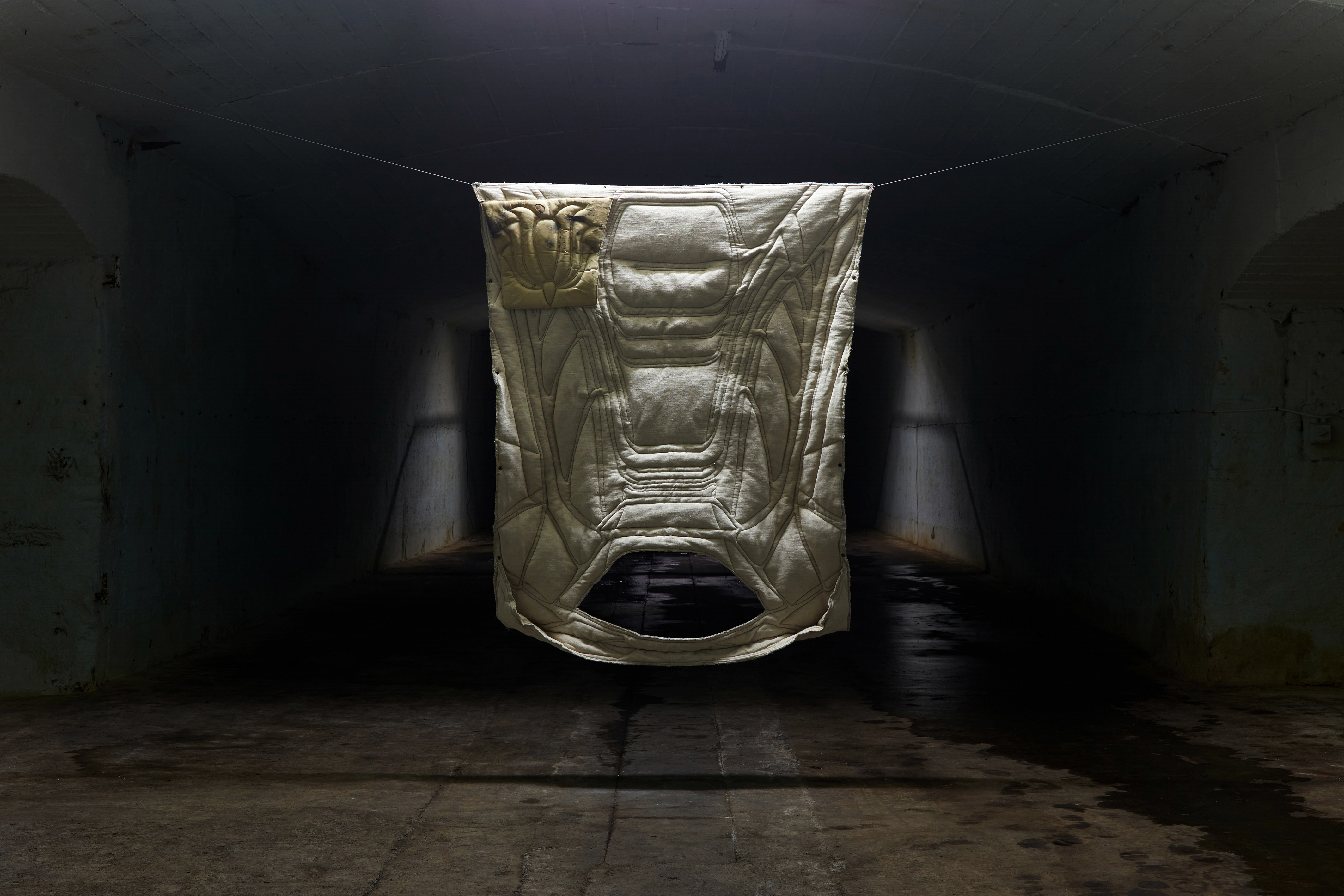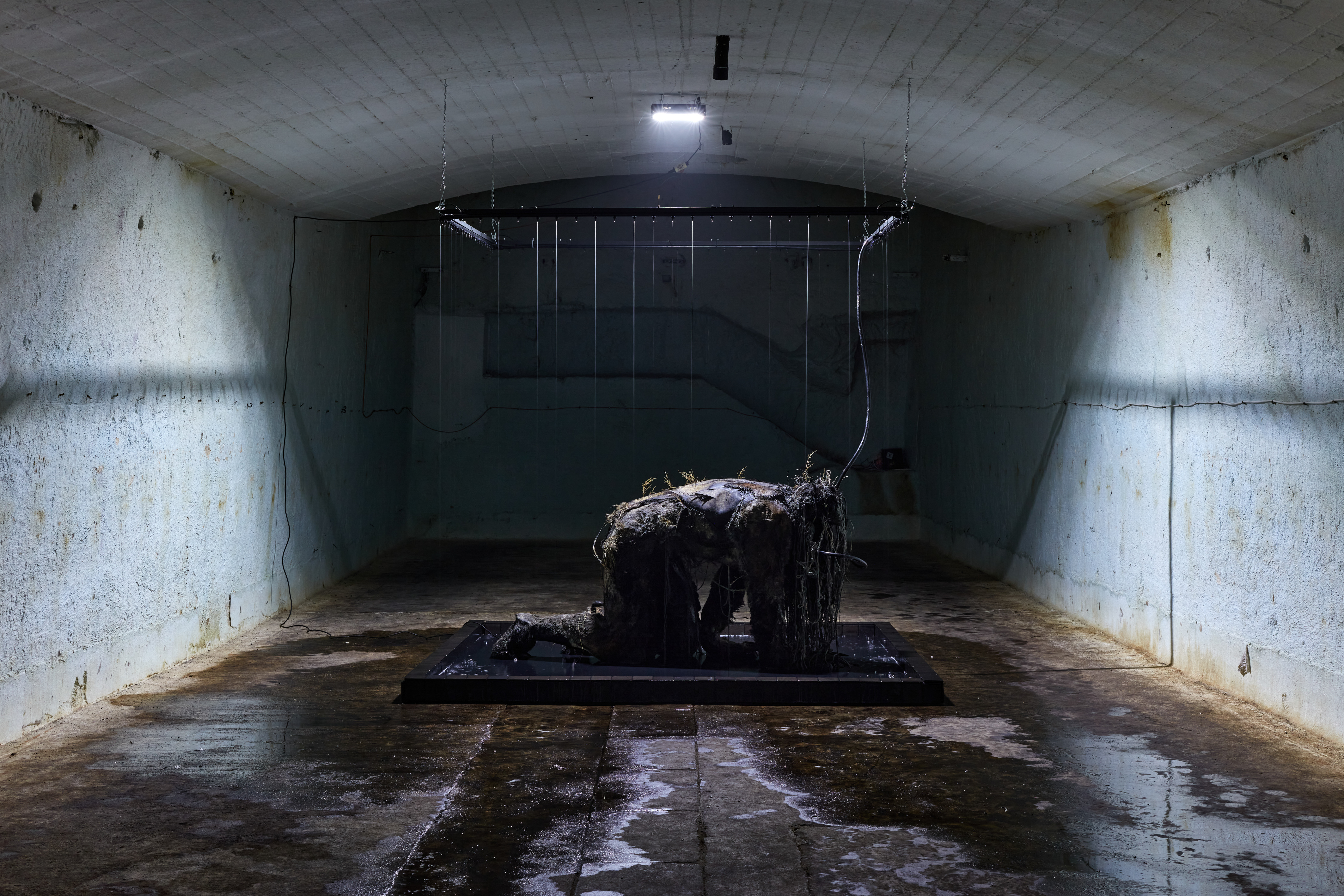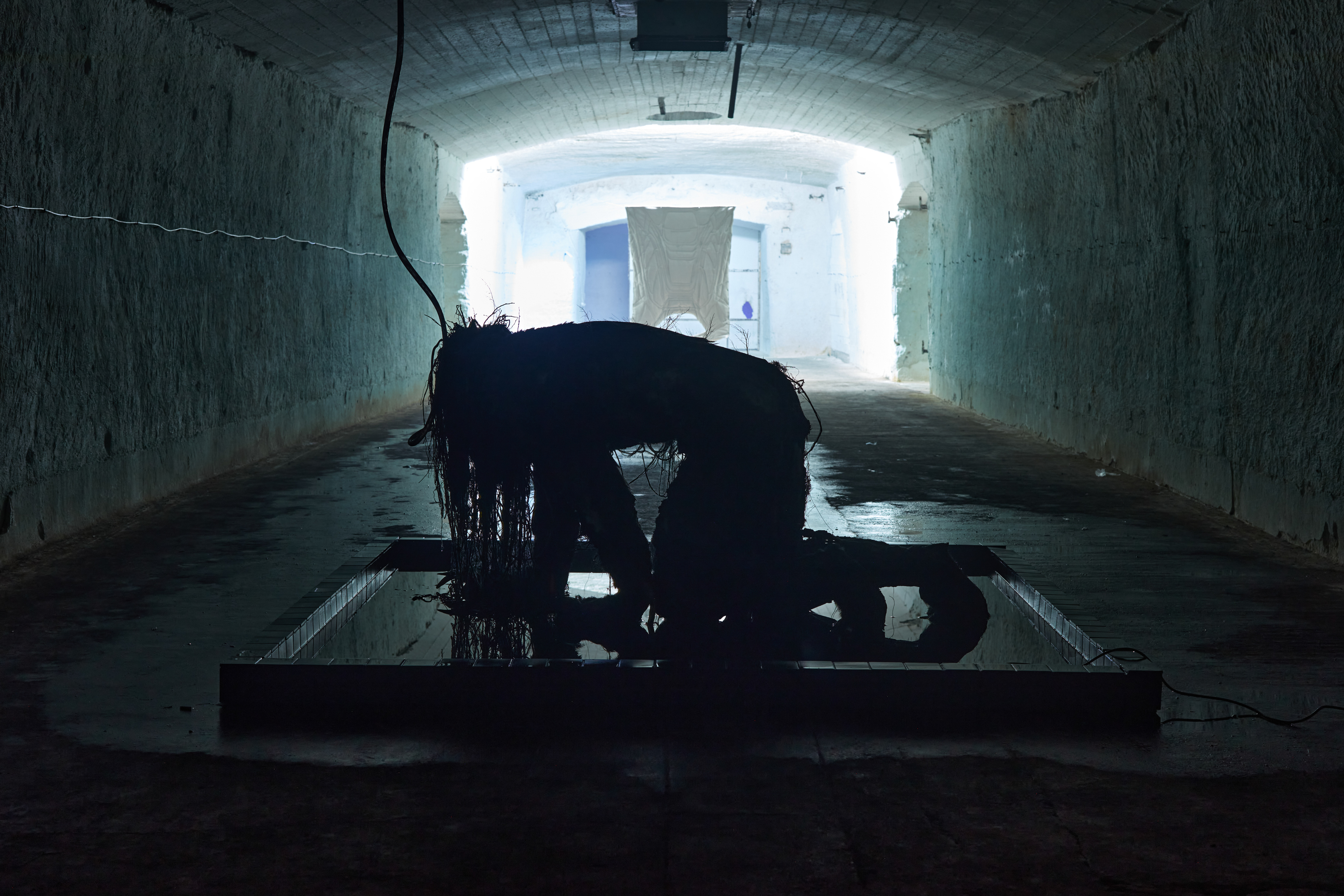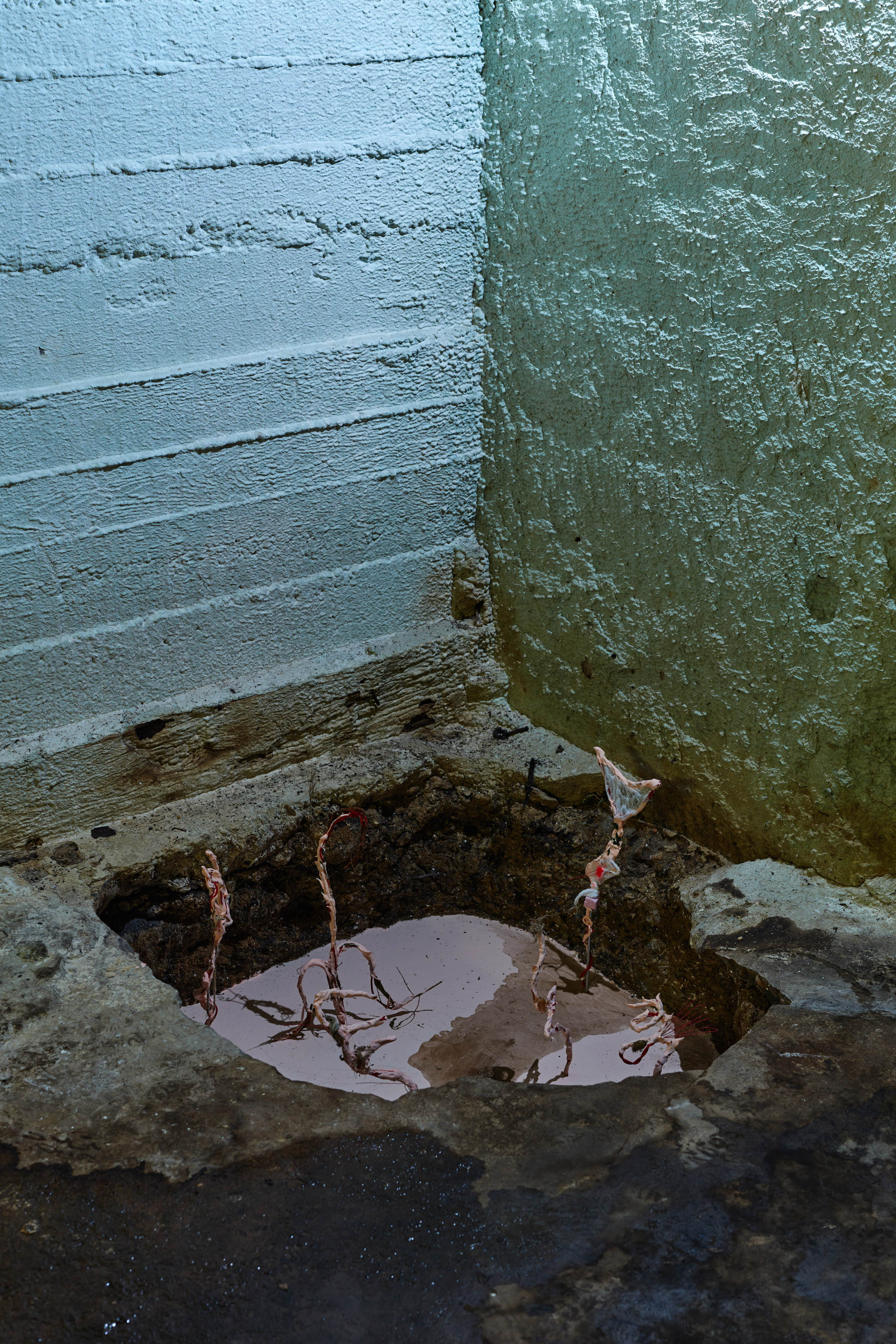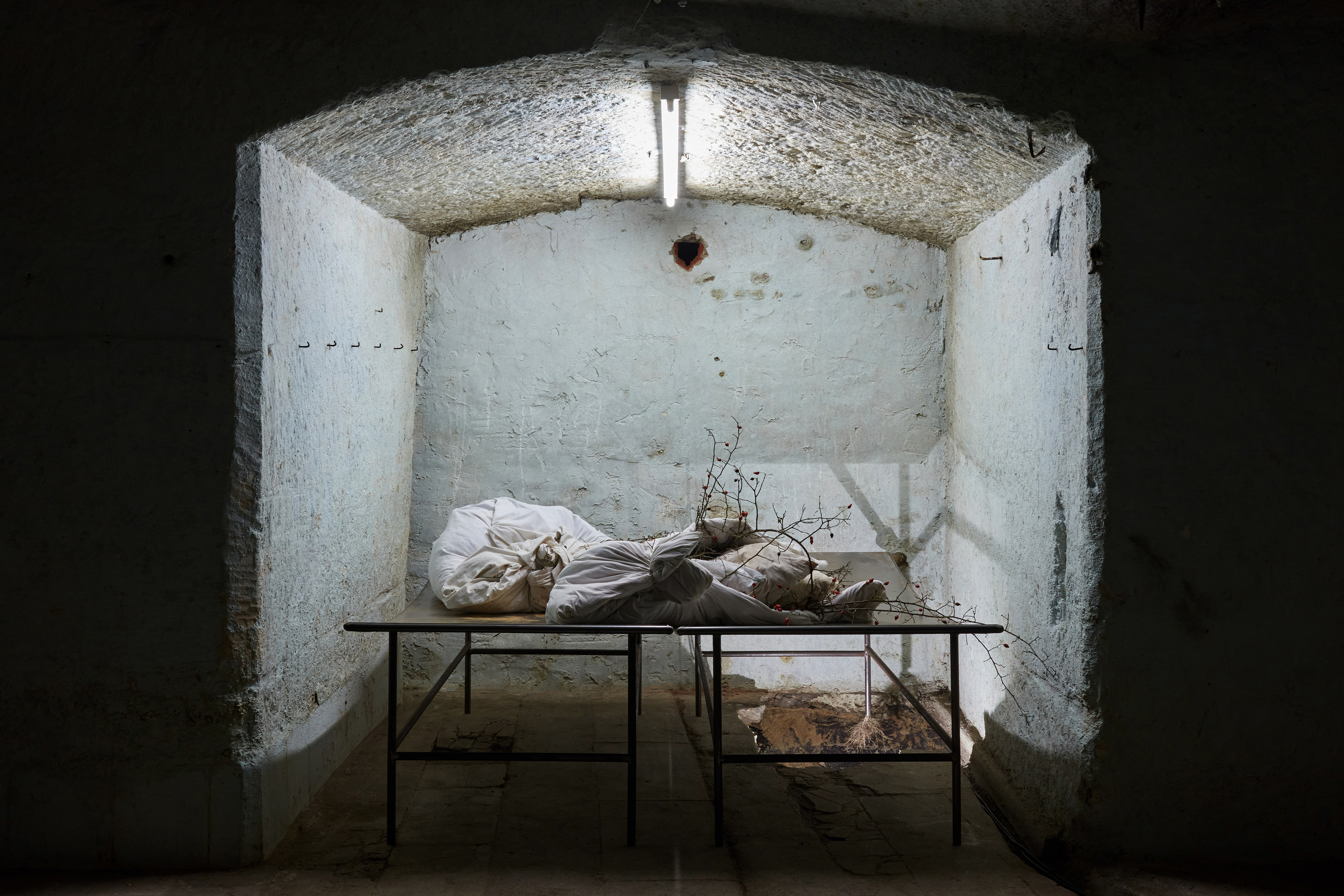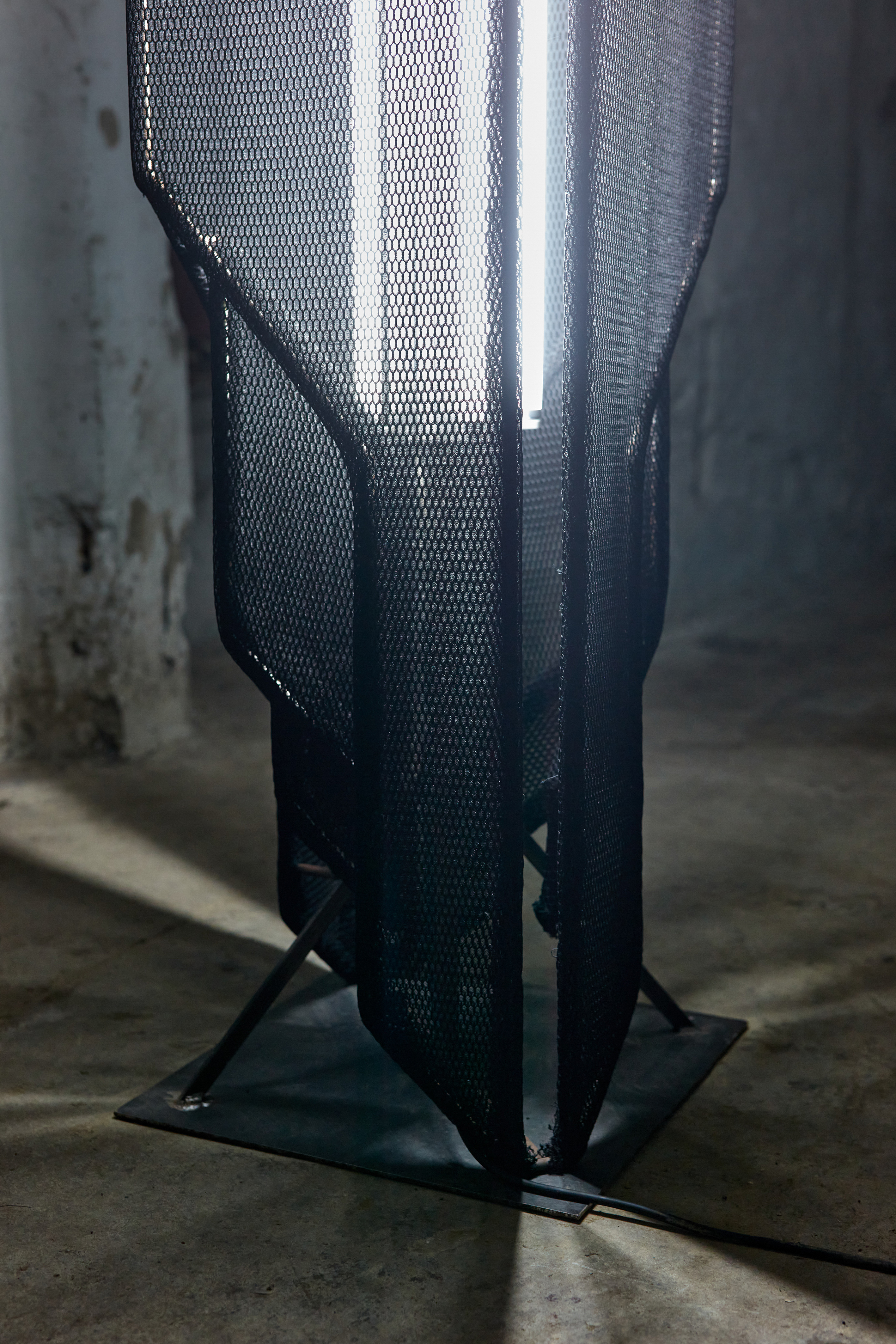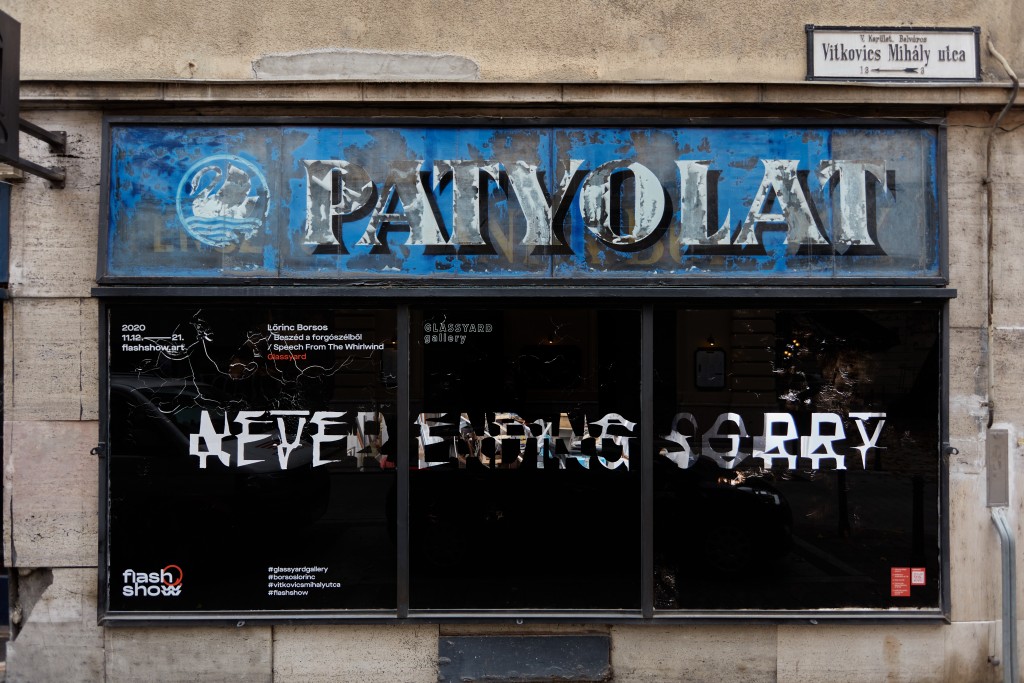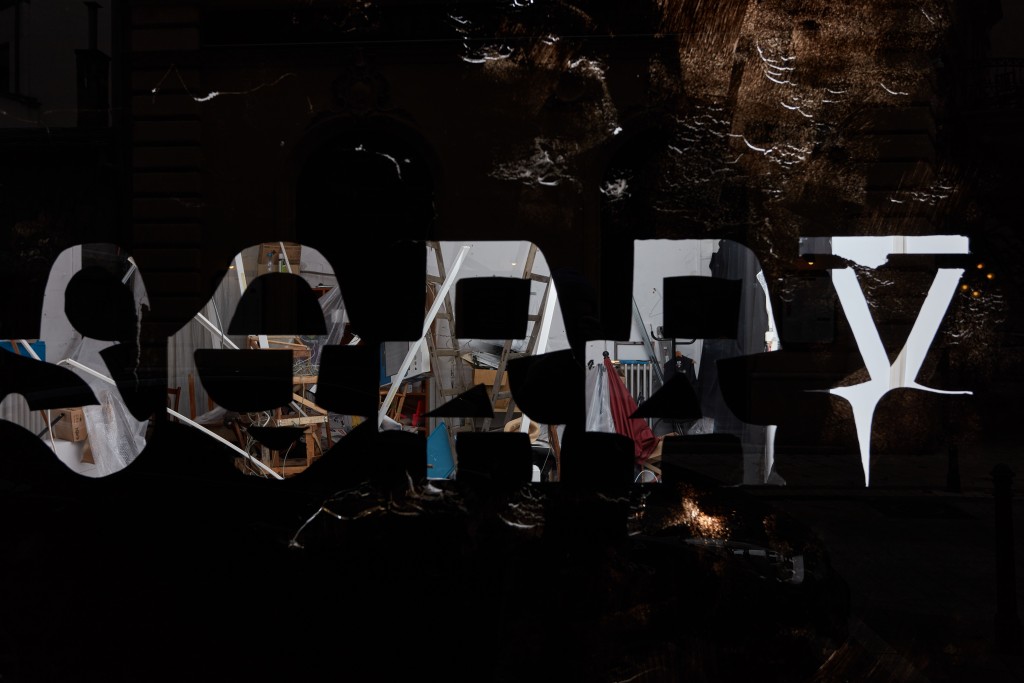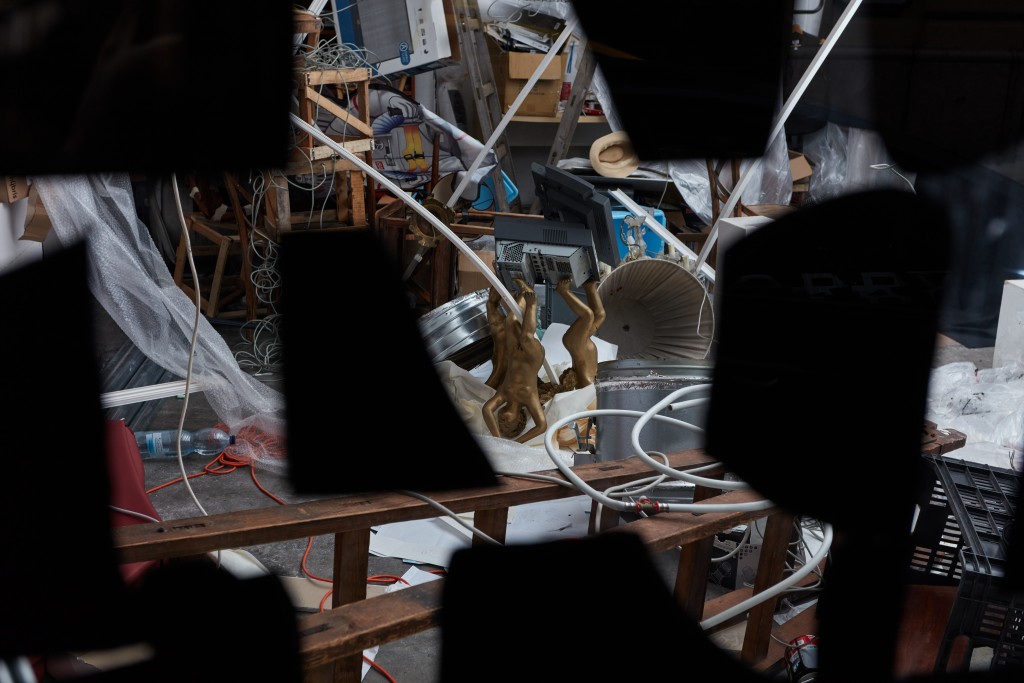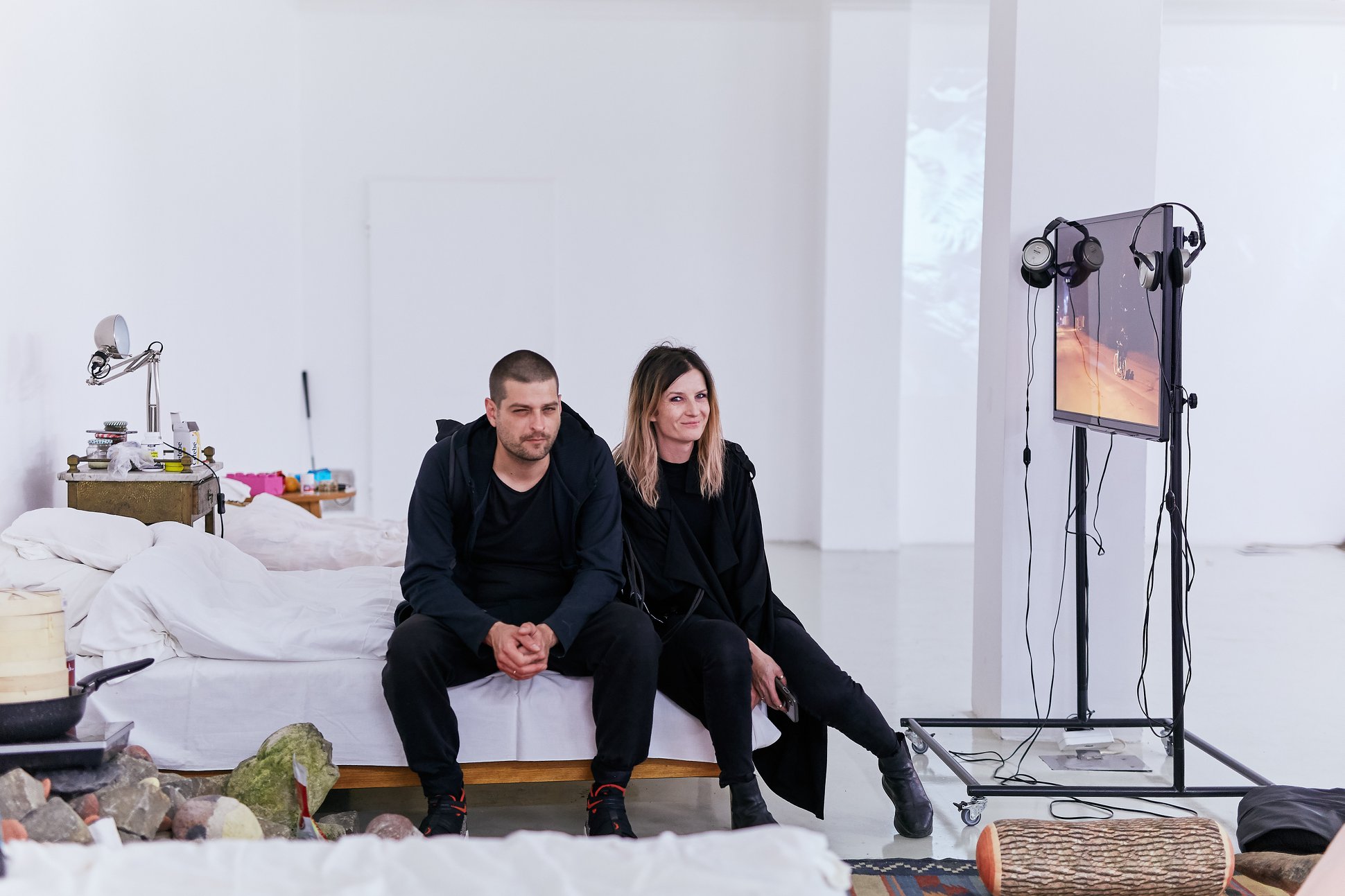
You’ve been working as an artist duo since 2008. I’ve always wondered: what it’s like to work as a duo. What are the advantages or the disadvantages that you’ve been experiencing over the past 12 years?
Being together 24/7. I think this is an answer to both the advantages and disadvantages. You merge into one another and start to function as a concept machine, viewing and living your lives conceptually, self-critically, publicly, using art as a tool to solve your problems, to answer your questions. You start to feel the pressure of the responsibility that art and the artist must function as the conscience of society. But this cannot work as a recipe, you can burn out pretty easily, because you forget to play and forget to enjoy the freedom that art should provide. When you reach that point, therapy can be useful as an outsider viewpoint, but we did make a project out of that too haha. One solution for us is to find distance from each other, and from our practice as well, to find different viewpoints from time to time. There has to be a rhythm somehow, which doesn’t come easy. But that’s when for example music comes and saves us.
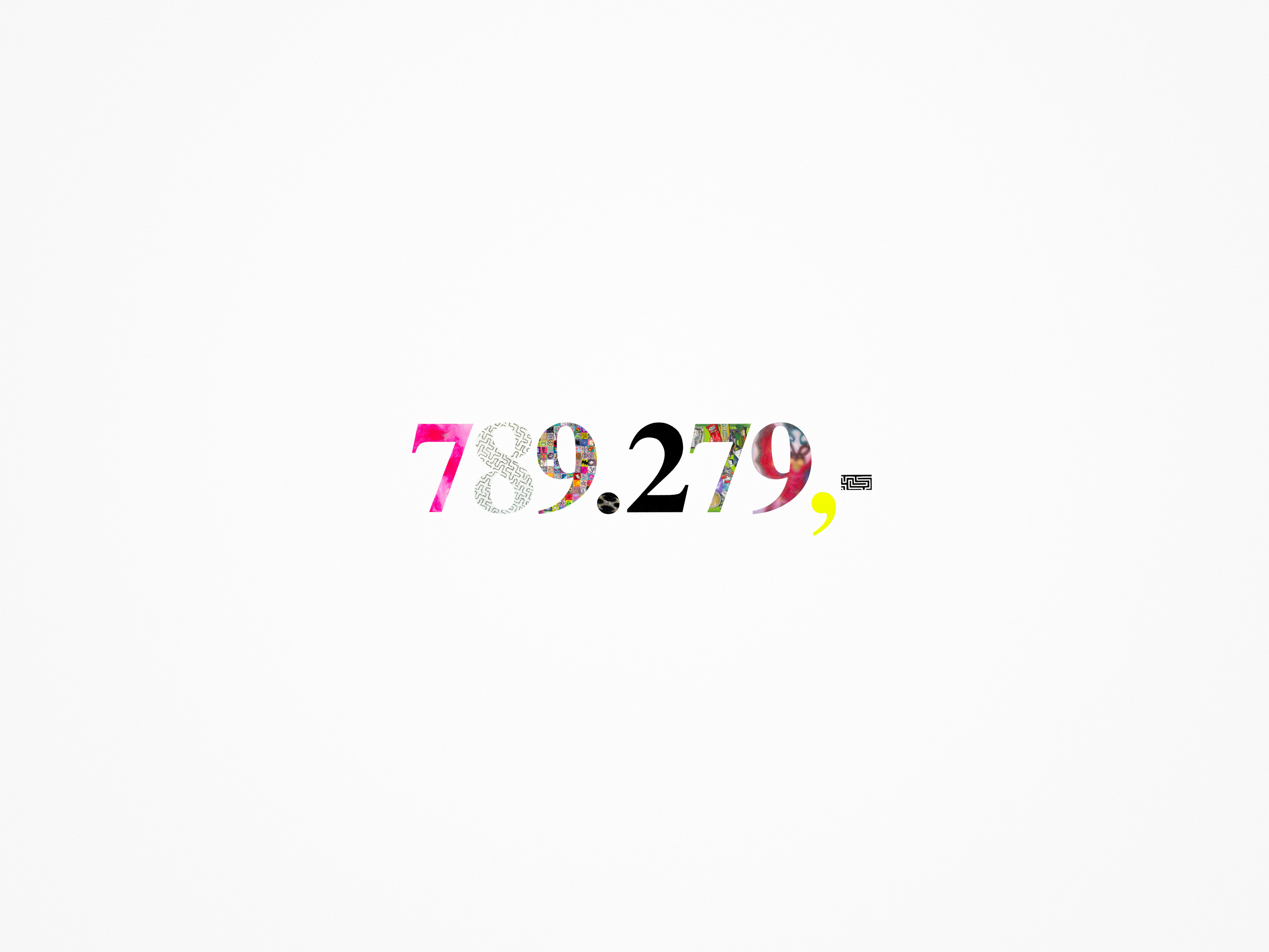
If I’ve not mistaken the public learnt your name in 2009 with the My Student Loan …which was a successful action but the Hungarian art scene had a different/ weird opinion. Do you remember the following months/years?
I remember feeling this urge that after introducing ourselves with such a controversial and loud stunt, we need to prove that we can be taken seriously, we are serious artists, we can paint, draw and sculpt, we are political, socially engaged, we are conceptual, we are hardworking and we suffer just as much as everybody else in this field. Success is always seen as something suspicious here in Hungary, so you better be careful!
Can you remember the first piece of art that really mattered to you?
Not really. But we remember some things that had a major impact on our taste in music, art or literature in our early teen years. A few examples: Autechre’s Silverside from the album Amber, Nine Inch Nails’ The Downward Spiral, Arkham Asylum, a graphic novel from Grand Morrison and Dave McKean, Nick Cave’s book And the Ass Saw The Angel and his album Let Love In… But we also share an experience from our hometown in Székesfehérvár, where there is this house which you can visit and see a huge collection of modern hungarian masterpieces from Lajos Kassák, Lajos Gulácsy, Sándor Bortnyik, Margit Anna or even Imre Bak, El Kazovszkij, and so on… We used to visit this place, the Deák Collection a bunch of times, sometimes just because it was so good to get lost in this labyrinth of old and beautiful stuff.
You have had exhibitions in several countries. Do you feel any difference between the reactions?
Fortunately or unfortunately we can’t think of too many things, but it was flattering when after exhibiting The Third Half in Brno the czech people told us that we are really dark people… From them, it’s quite a compliment I guess.
Nonentity, ICA-D, Dunaújváros, 2016, photo: Áron Weber
What are the most important influences and mindsets you both share?
The extremes in everything, and the transition between them: how to bring them together, let it be Christianity and materialism, right and left, saints and sinners… But it’s not about blending or putting things out, we’re not about balancing, it’s about interoperability, which is ultimately about freedom. There can’t be taboos in art.
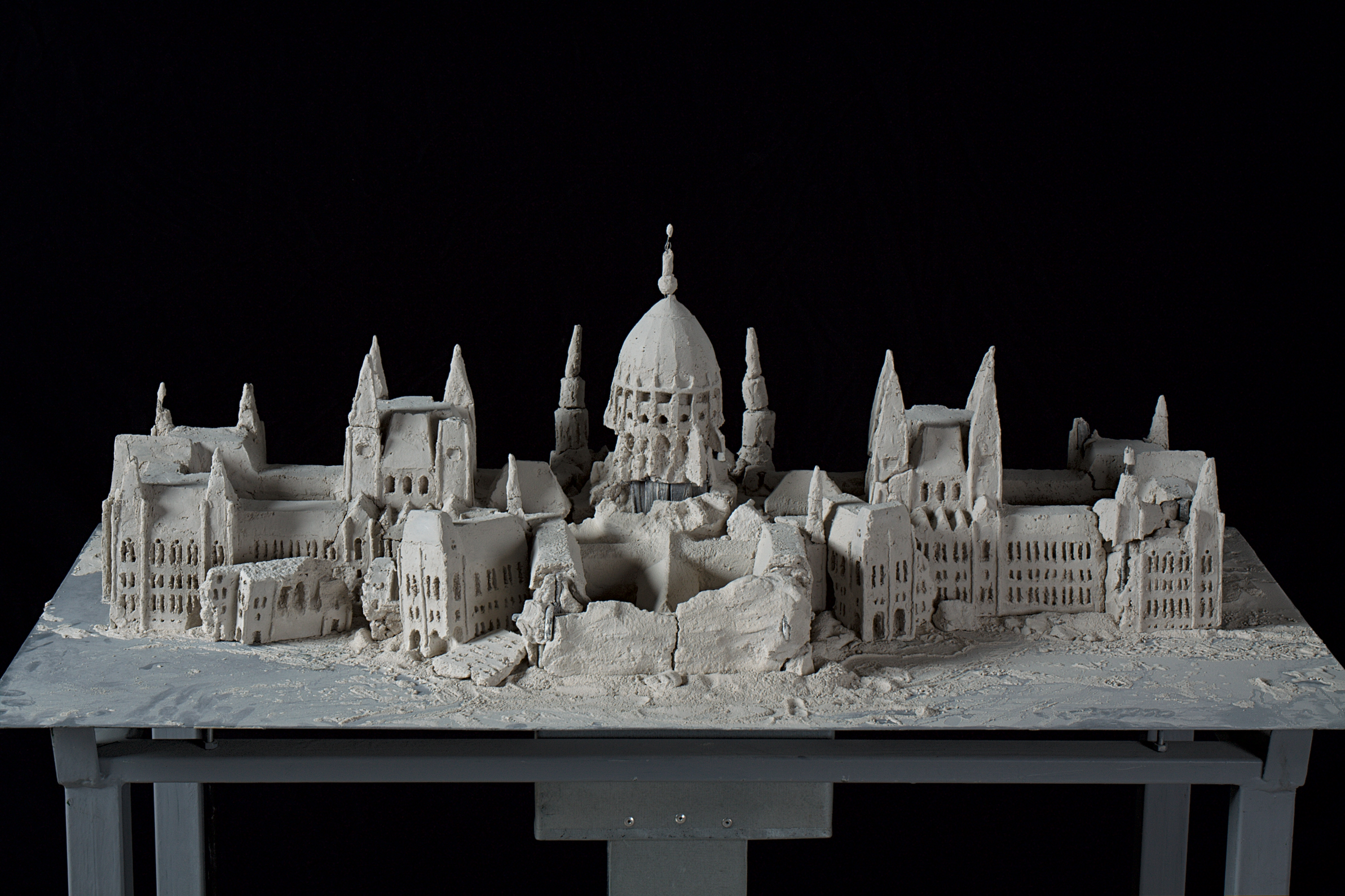
Your works are made of the most interesting materials, from leather to plexi and glaze, sound. Which materials do you currently enjoy working with the most and why? Are there any materials that you would like to work with more in the future?
Mud and dirt and metal. But I think the deepest well will always be to one filled with the shiny black enamel paint.
Can you mention some milestones of your “being an artist” history?
2000 – when we got together and the year when our first group called The Corporation was founded
2008 – when BL was born
2010 – our first solo show titled Immovable Land
2013 – our first major burnout and the start of our long term soul-searching project called Self-Critical Portrait
2016 – Nonentity, the solo exhibition which meant a huge shift for us, in terms of how we work together and with the shiny black substance BLAEK
What boosts your energy?
Deadlines, crisis, and when the thing that you are making starts to show more than you intended or you could imagine.
Can you tell more about the exhibition idea (mmm) and the process of how artists were involved?
Originally the idea came from Adrian Kiss. About a year ago he asked us if we wanted to make a duo show with him, and we loved the idea, of course. In our minds as the venue for the show we imagined from the very beginning the dungeon underneath aqb, but as we started to discover the place, we realized that it is huge and has so much more to offer. So we decided to make an event based exhibition with performances, sound, party etc. That’s when we invited Hollow (Szeri Viktor, Páll Tamás, Gyula Muskovics) to bring something performative that they wanted to show somewhere in Budapest at that time. Luckily they were also thinking about introducing something that is both a performance and an installation, a new complex work. Then Gyula, after seeing the place, suggested that we should definitely show a specific work by Márton Emil Tóth. This idea worked like a magnet, and after a while the crew just grew organically into this group of artists coming from very different stages in their carrier. For example Daniel Kophelyi was just finishing his studies in the Academy of Fine Arts in the graphic design department, but we knew his interest in installations and really weird materials, like the mushrooms. It was just obvious to invite him too.
Many of the artists involved, like Szilvia Bolla, Erik Mátrai, Ppillovv, Márton and also us have studios here in aqb, and this was important because – in spite of the circumstances, namely the Covid-lockdown, – we could still find community, meet and resonate with the place together. But after all I think the calling came from the dungeon itself, from the underground, and somehow we could all hear it roar and relate to it on a subconscious level, and, to be honest we still can’t figure out how did everything go so smoothly.
Never Ending Sorry, Flash Show, 2020 photo: Dávid Bíró
What does this exhibition (mmm) mean to you?
Personally? It is our Phoenix, professionally.
Why do you think it’s easy to work with you?
Is it? ☺ I think it might be because it’s the core of our practice to think and to exist collectively, to provide safe-space for others, where they can dig up any kind of craziness without any shame. I think we can be very open, patient and we are willing to adapt to different kinds of approaches.
Do you have any specific plans for the future?
Maybe this will be the first year in our career when we can focus more on our individual projects than on BL, since he/she is almost a teenager now, so after 13 years we can detach ourselves a little and make room for parallel dimensions. Jano is writing his thesis for the doctoral school and working on his upcoming electronic music releases (Dióbél and Exiles Records), Lilla is working on her solo show, reviving her old style of painting after a long long break.
Lőrinc Borsos (2008-) is the in between persona of Lilla Lőrinc (1980-, Mór) and János Borsos (1979 -, Székesfehérvár) based in Budapest, Hungary. www.borsoslorinc.com
